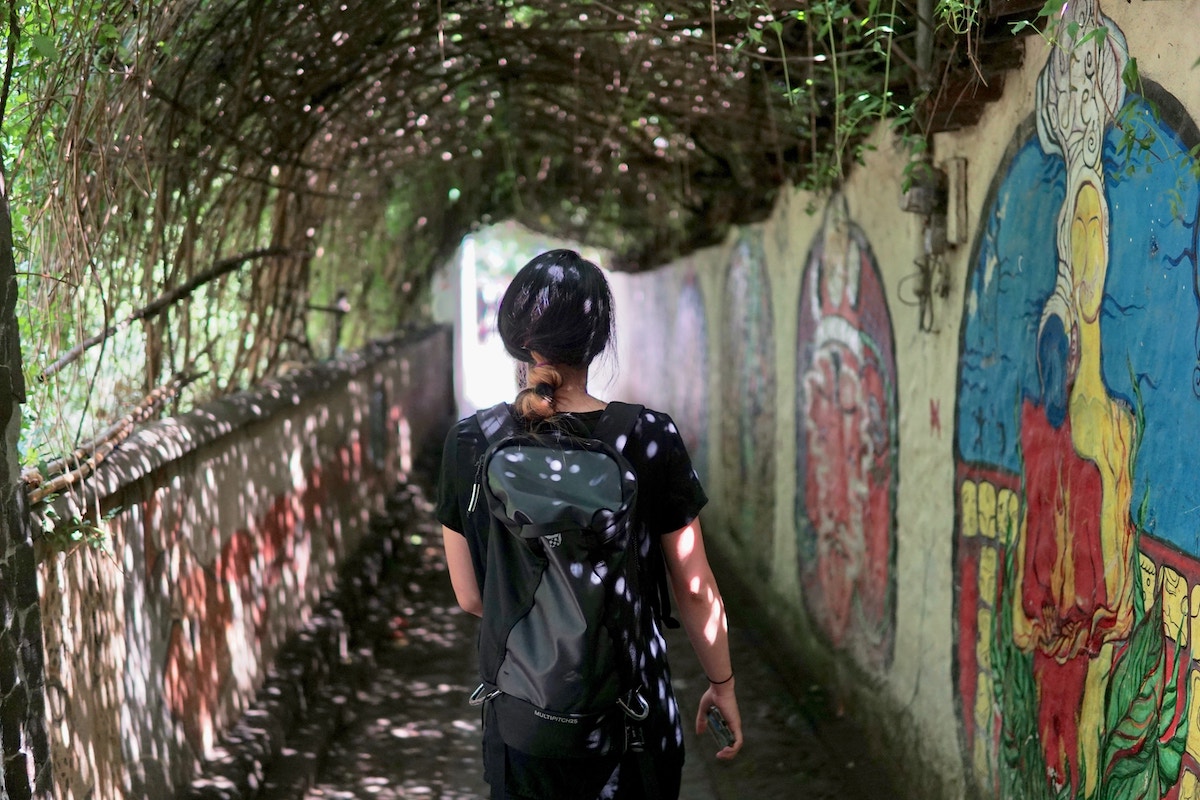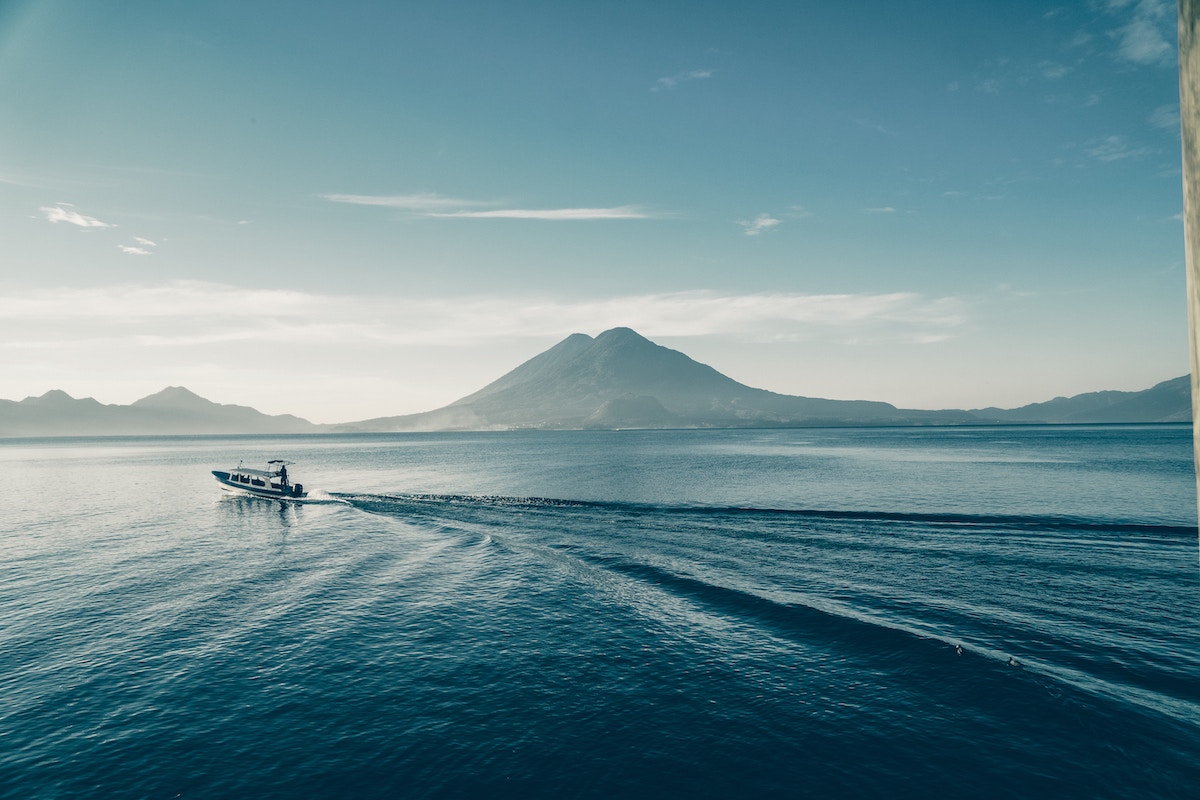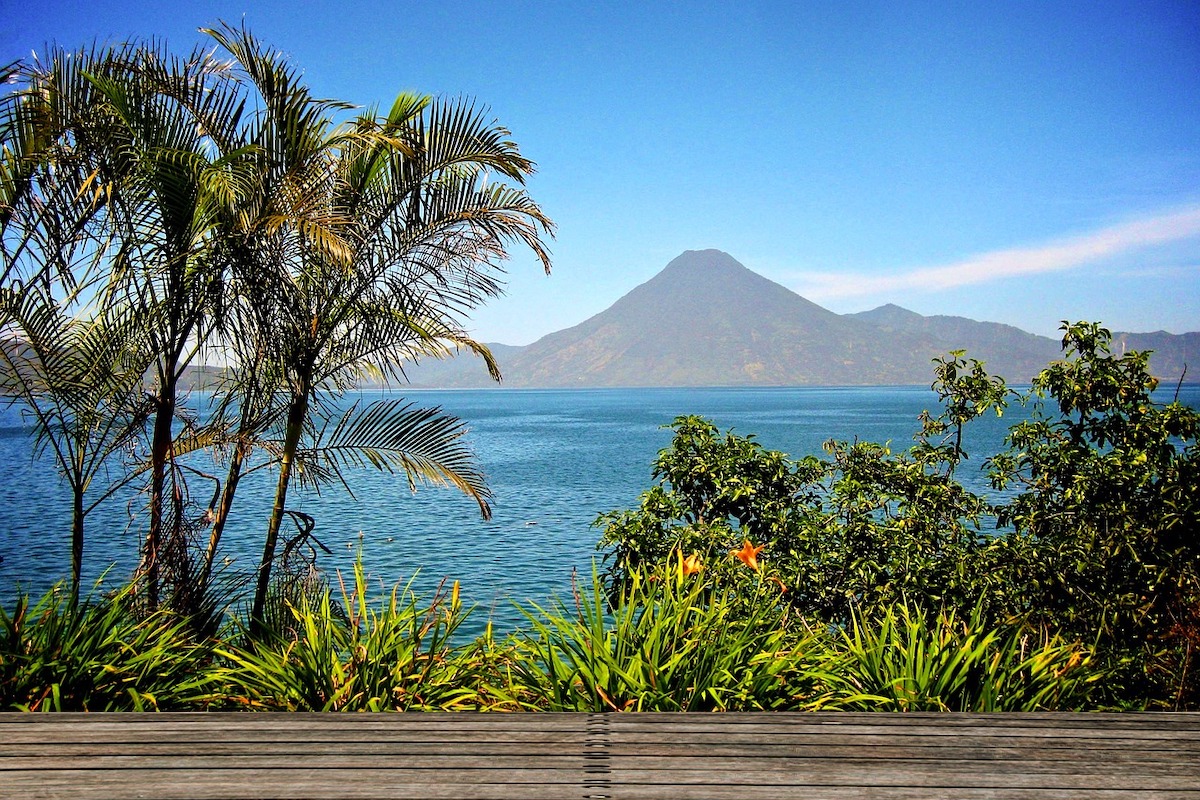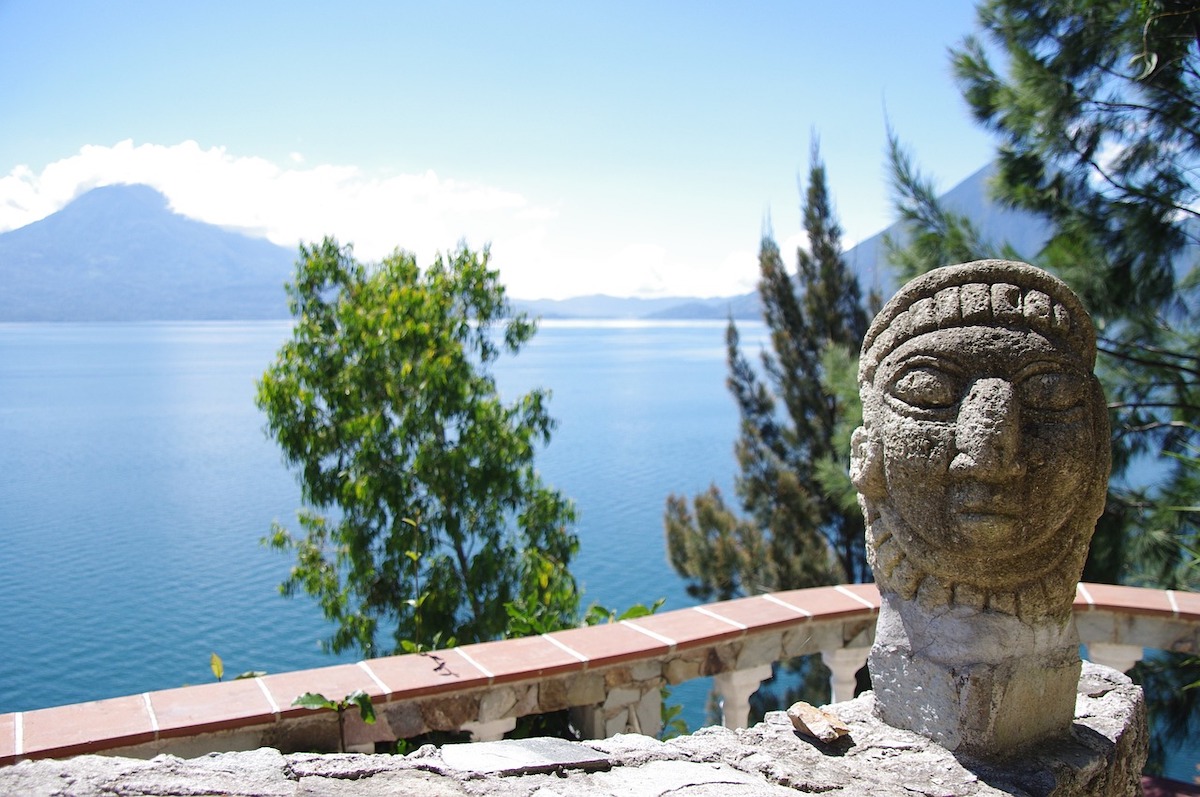By: Heather Keys
Skip to...
Situated in the Guatemalan Highlands, Atitlán is a volcanic lake surrounded by mountains and volcanoes. Its historical and cultural ties to indigenous communities, particularly the Maya civilization, add depth to this natural attraction, and the lake’s shoreline is home to various traditional villages and markets.
Let’s find out more about Lake Atitlán and what it has to offer!
The Mayan People and Lake Atitlán: A Brief History
Lake Atitlán has long been significant to the Mayan people. Several indigenous Mayan communities, primarily the Tz’utujil and Kaqchikel, have called this area home for centuries. The history of the Maya around Lake Atitlán can be traced back to the Preclassic period (2000 BCE—250 CE) of Mesoamerican history, with archaeological evidence such as pottery and artifacts suggesting their presence during this time.
The lake’s settlements gained prominence during the Classic period (250—900 CE), as major cities like Tikal, Palenque, and Copán emerged in the Maya lowlands. The highlands, including the Lake Atitlán region, played a vital role in trade and cultural exchange between the lowlands and other parts of Mesoamerica.
Throughout their history, the Maya around Lake Atitlán experienced various conflicts and power dynamics. The Postclassic period (900—1500 CE) witnessed the decline of the Classic Maya civilization and the rise of smaller, competing city-states. The Tz’utujil and Kaqchikel peoples often found themselves in warfare and alliances with each other and with neighboring K’iche’ and Mam Maya groups.
The 16th-century arrival of the Spanish, led by Pedro de Alvarado, brought significant changes to the region. The Spanish conquered the Mayan peoples through a series of campaigns, eventually integrating them into the Spanish colonial system. Indigenous populations faced forced labor, religious conversion, and the introduction of new diseases, which severely impacted their communities. Despite these challenges, the Mayan people around Lake Atitlán preserved many aspects of their culture, including languages, customs, and artistic traditions.
Today, the Mayan history around Lake Atitlán can be seen in the traditions, languages, and customs of the local Tz’utujil and Kaqchikel communities. Visitors can also explore archaeological sites like Iximché and Chuitinamit to uncover remnants of ancient Mayan settlements.

Image by Patricia Lucki from Pixabay
Lake Atitlán Archaeological Sites: Iximché and Chuitinamit
For those interested in archaeology, Iximché and Chuitinamit are two significant archaeological sites that give insights into the ancient Mayan civilization in the Lake Atitlán region. Both sites were important in the history of the Maya peoples, especially during the Postclassic period.
Iximché
Located approximately 90 km from Lake Atitlán, near the modern town of Tecpán in the department of Chimaltenango, Iximché was the Kaqchikel Maya kingdom’s capital from around 1470 until the Spanish arrived in 1524. Though not directly on the lake, it is closely connected to the Mayan peoples’ history in the Lake Atitlán region. The city was strategically built on a high plateau, providing natural defenses against potential attacks.
The Iximché archaeological site has various plazas, palaces, temples, and ball courts, which were essential components of ancient Mayan cities. A ceremonial center at the site hosted religious and political activities. Visitors today can explore the ruins and learn about Kaqchikel Maya history through guided tours and interpretive signage.
Chuitinamit
Also known as Tzunun’Ya, Chuitinamit is an archaeological site situated on a hill overlooking Lake Atitlán’s southern shore, near the town of Santiago Atitlán. The site served as the ancient capital of the Tz’utujil Maya people and is believed to have been inhabited from the Classic period (250—900 CE) until the Spanish conquest in the early 16th century.
Chuitinamit is known for its terraced architecture, built to accommodate the hill’s steep terrain. The site comprises plazas, residential areas, and a central acropolis with several temples and palaces. Its strategic location made Chuitinamit crucial to regional politics and trade during the Postclassic period. Visitors can explore the ruins while enjoying stunning views of Lake Atitlán and the surrounding landscape, learning about the history of the Tz’utujil Maya people.

Photo by Marissa&Eric on Unsplash
Lake Atitlán’s Traditional Villages
San Juan La Laguna
On the lake’s western side, San Juan La Laguna is home to the indigenous Tz’utujil Maya people, who work hard to preserve their traditional way of life. If you have the chance to visit, take some time to look at the murals and try the local coffee!
Santiago Atitlán
As the largest town along Lake Atitlán’s shores, Santiago Atitlán is also home to the Tz’utujil Maya people. Your first stop here should be the marketplace filled with local crafts and fresh produce—also be sure to visit the church of Santiago Apostol, which combines Catholic and Mayan beliefs; and the nearby Cerro de Oro, a hill offering panoramic views of the region.
San Pedro La Laguna
At the base of San Pedro Volcano is San Pedro La Laguna, which has become a popular destination for backpackers due to its affordable prices, nightlife, and outdoor activities. The village has amazing views of Lake Atitlán, and you can try kayaking, hiking, or horseback riding to further appreciate the area.

Photo by Christopher Garcia on Unsplash
Lake Atitlán Activities for Travelers
There’s no shortage of activities for adventurous travelers at Lake Atitlán, from exploring villages and archaeological sites to enjoying the great outdoors. Here are a few suggestions:
- Boat tours and kayaking: To truly experience Lake Atitlán, consider taking a boat tour or renting a kayak, which is a fun way to pop into different towns while enjoying the views from the water.
- Volcano hiking: Three main volcanoes—San Pedro, Atitlán, and Tolimán—surround Lake Atitlán. The San Pedro Volcano hike is popular and accessible, while the Atitlán and Tolimán hikes are more challenging and less frequented.
- Nature reserve and park visits: The Reserva Natural Atitlán, near Panajachel, is a great place for hiking, birdwatching, and learning about local plants and animals. The reserve has a butterfly sanctuary, trail network, and visitor center with exhibits on regional biodiversity. Alternatively, visit the Cerro Tzankujil Nature Reserve near San Marcos La Laguna, which has trails, swimming spots, and a viewing platform for lake views.
- Shopping: Exploring local markets around Lake Atitlán is a great way to learn more about the region’s culture while picking up some souvenirs and snacks. Popular markets include Santiago Atitlán, Sololá, and Chichicastenango (about 1.5 hours from Panajachel but worth the trip).
Have you had the opportunity to visit Lake Atitlán—or anywhere else in Guatemala? Share your stories and advice with the Frayed Passport community!
About the Author
Heather is a freelance writer who loves exploring the intersection of travel and history. Read her other articles on Frayed Passport here.
Featured image by Marco Antonio Reyes from Pixabay


